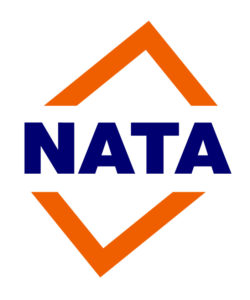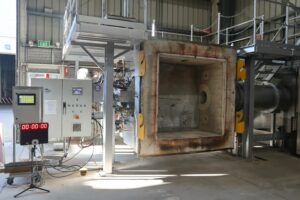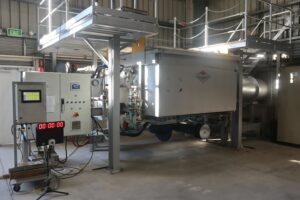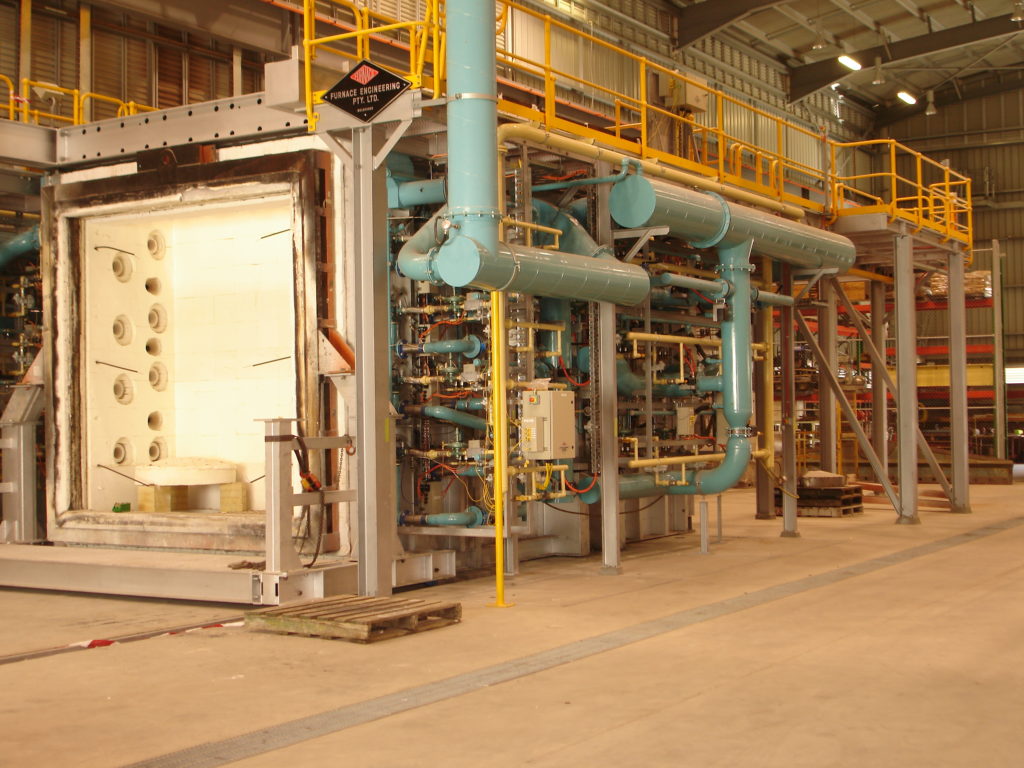Fire Testing
CSIRO operates the Fire Technology Centre (FTC) in North Ryde, Sydney NSW. The Centre’s capabilities assist Australia to ensure the safety and performance of its critical built environment and transport infrastructure.
The facility is uniquely equipped to operate at a range of scales, including testing up to full-scale building elements (walls, floors and facades), and sections of road and rail transport tunnels linings. The FTC operates for the benefit of the Australian people, industry, government, and regulators by enhancing the safety of national infrastructure, supporting product compliance, and informing effective building regulations.
We carry out testing in the areas of reaction to fire, fire resistance, bushfire testing and are NATA accredited for these services. The scope of our NATA accreditation for these services can be found
What is Reaction to Fire Testing?
Reaction to fire testing examines the combustibility, ignitability, heat evolved, spread and smoke emission properties of materials. Such testing quantifies their role in the progression and propagation of fires. This focus is distinct from fire resistance testing, which validates a material’s capacity to withstand fire passage. Quantifying the initial phases of fire development holds paramount significance in ensuring safe evacuations, whether in a vehicle or building and is required by various building and vehicle regulations.
What is Fire Resistance Testing?
Fire resistance testing examines the ability of a product or system to resist the passage of fire through an element or weaken the element to an extent it cannot perform its structural or other intended function. Fire resistance is determined through full scale destructive fire testing, designed to replicate the product or systems intended end use application and in some cases structurally loaded. Quantifying the fire resistance behaviour of building products, systems and materials holds paramount significance to the safety, stability and response of a building or vehicle to a fire and is required by various building and vehicle regulations.
What is Bushfire testing?
Bushfire testing is a broad term that could include many and varied experiments related to the movement of fire within the landscape, the impacts of fire and smoke on people and the environment to the response of building products and systems used in home to the effects of bushfire. CSIRO Fire Technology Laboratory provides testing services related to the response of building products and systems used in home to the effects of simulated bushfire. Quantifying the bushfire behaviour of building products, systems and materials holds paramount significance to the safety, stability and response of a building exposed to bushfire and is required by various building regulations.
CSIRO National Fire Technology Centre “Fire Resistance” Capability in detail
- Doorsets and hardware
- Duct testing
- Dampers
- Fire stopping product testing
- Floor and suspected ceilings
- Glass and glazing systems testing
- Structural steel, concrete and timber element testing
- Concrete, composite steel concrete and timber barrier testing
- Wall and partitions
- Cables and cable support systems
- Tunnel linings
- Building elements exposed to the effects of simulated bushfire exposure.
CSIRO National Fire Technology Centre utilises full scale vertical and horizontal furnaces for loaded tests and medium and small scale furnace for smaller scale features
- Wall furnace 3000 x 3000 mm for walls and other elements and features fitted within walls
- Floor furnace 4300mm x 3000mm simple spanning elements or 6000 x 3000 mm for simple span or continuous spanning elements.
- Maxi – Pilot furnace 1600 x 1600 mm – enables designers and sponsors access to a medium, cost-effective furnace for testing prototype systems or for assessing alternative items of hardware for fire doors, dampers, penetration seals and electrical wiring features that can be tested at full scale in a smaller furnace.
- Pilot furnace 1000 x 1000 mm – enables designers and sponsors access to a small, cost-effective furnace for testing prototype systems or for assessing alternative items of hardware for fire doors, dampers, penetration seals and electrical wiring
- Column loading furnace – compression loading apparatus for testing to 80t under fire conditions
- Hose stream tests – testing of fire-rated systems to ASTM E2226
- Full scale bushfire radiant panel 3000 x 3000 mm
Maxi Pilot Furnace (Horizontal mode)
Maxi Pilot Furnace (Vertical mode)
Full Scale Furnace
The scope of our NATA accreditation for “Fire Resistance” testing services can be found
CSIRO National Fire Technology Centre “Reaction to Fire” Capability in detail
- Building cladding testing
- Construction fire testing
- Insulation flammability testing
- Marine fire testing
- Textiles and furniture testing
CSIRO National Fire Technology Centre utilises various equipment including :
- Combustibility furnace – to examine the combustibility of materials in accordance with AS 1530.1, BS 476 Parts 4 and 11, and ISO 1182.
- Building façade and cladding testing and classification in accordance with AS 5113 and BS 8414 parts 1 & 2 and ISO 13785-2.
- Early fire hazard apparatus – to examine the fire indices related to ignitability, , heat evolved, spread and smoke developed when tested to AS 1530.3
- Flammability apparatus – to test thin, flexible materials such as curtain and upholstery fabrics to AS 1530.2
- Flooring radiant panel – to examine Critical radiant heat Flux (CHF) and smoke developed for floor covering materials in accordance with AS\ISO 9239.1
- Cone calorimeter – to examine the rate of heat, smoke and gas release for modelling and other purposes, in accordance with ASTM E1345, ISO 5660 and AS/NZ 3837.
- Surface burning characteristics – to examine the spread for factory made air ducts and air connectors in accordance with UL 181 part 11.
The scope of our NATA accreditation for “Reaction to Fire” services can be found
Building Product and System Assessments in Australia
What are assessment Reports?
A fire assessment has been called an “opinion”, “letter of opinion”, “Report from NATA accredited laboratory”, “report from an Accredited laboratory” and other things. The current term that CSIRO uses is “Assessment”. These documents are described as a report that includes a comprehensive study based on test reports that examine the impact of minor variations to tested products or systems on their fire performance. These reports are:
- Generally focused on the building industry
- Intended as “Deemed to Satisfy Solutions” rather than Performance Solutions in the context of the Australia Building Regulations (NCC)
- Generally, prepared to meet requirements of various NCC clauses including A5G3, A5G5, A5G6 and A5G7 as being ba ”report from an Accredited Testing Laboratory”
How are they put together?
CSIRO’s assessment reports vary in scope, ranging from simple evaluations of minor product modifications or variations to a test method to labyrinth analysis based on many test reports and utilising various engineering methodologies. These assessments often involve interpretation and interpolation of results from a test to evaluate the impact of various factors in construction or product design has on its performance. They include a clear statement of the construction or product being assessed and appendices summarising the facts relied upon and a detailed discussion on the basis of the conclusions made.
Assessment or Test first?
In instances where direct fire testing of every possible combination and configuration (minor variation) of a product is not feasible, the CSIRO assessment team can provide the following fee based services
- provide an assessment after the testing is completed or
- structure a logical test program before testing is done to address the variables and behaviour expected for the various forms of construction the client wishes to commercialise.
What are the key types of services to request?
Our fire assessment team offers the following services in our area of expertise:
- Assessment Report – Comprehensive fire assessment reports that address variations to fire resistance, reaction to fire, and bushfire attack levels of products.
- Test report confirmation – Confirmation of fire performance of a product or system to the extent possible to current Australian standards, based on reference to test reports from accredited test laboratories that were tested to test standards other than the current versions.
- Test Program Consulting – Consultation on new product ranges or systems to identify the essential tests needed for regulatory compliance.
Use of Expired CSIRO Opinions/assessments
CSIRO opinion/assessment reports include 5 year validity period, CSIRO has been asked from time to time about the use of expired CSIRO opinion/assessment reports in conjunction with Performance solutions (or the like) for the compliance of new or upgraded buildings with materials manufactured/supplied/installed/certified after the expiry of the CSIRO opinions/assessment report.
CSIRO does not support the use of expired opinions/assessments for demonstrating compliance after the opinions/assessments expiry date. CSIRO opinions/assessments may expire for various reasons including the following. In such circumstances, the conclusions of the report be invalidated and outside the control of CSIRO;
- the client may have refused to confirm the specification of the product has not changed since the referenced tests occurred and/or the product has changed (requested at renewal date).
- CSIRO may have new knowledge and experience in the area of the opinion/assessment that could change or contradict its outcome, consequently, the sponsor/client/manufacturer may have chosen to not align the opinion/assessment in line with that knowledge and experience and let it expire.
- CSIRO may have new knowledge and experience on the subject of the opinion/assessment which could change or contradict its outcome. As the opinion/assessment is expired and the sponsor/client/manufacturer and report reader may therefore be unaware CSIRO may no longer support the outcomes stated in the opinion/assessment.
- Where the report has expired, and one of the above items occurs CSIRO has no reason to revise update or correct expired opinions/assessments unless requested by the opinion/assessment sponsor.
There is no way the reader of an expired CSIRO opinions/assessments can be aware of any of the above issues and as such CSIRO does not support the use of expired CSIRO opinions/assessments demonstrating compliance after the opinions/assessments expiry date.
Should the subject of an opinion/assessment need to be relied upon for building or construction or compliance works for materials supplied after the expiration of the assessment or opinion, the assessment or opinion will have to be updated. Practically this updating process can only be requested by the sponsor of the opinion/assessment.
Should the subject of an opinion/assessment need to be relied upon for building or construction or compliance works undertaken before the expiration of the opinion/assessment CSIRO does not see a reason for the extension of the validity of the opinion/assessment to support that installation.
We trust the above information provides users of CSIRO opinions/assessments the confidence of when to use them and when the sponsor of the opinion/assessment should seek a revalidation of the report.




